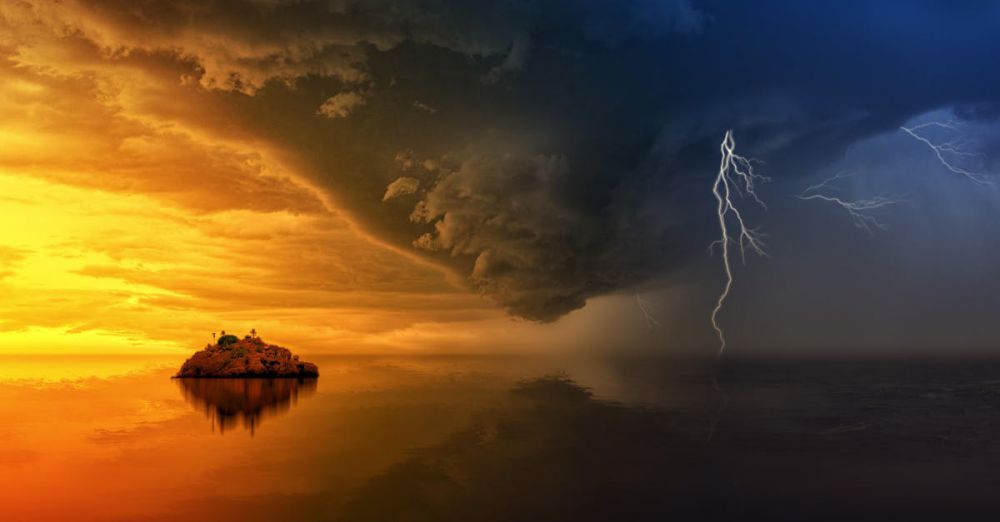What Weather Conditions Are Best for Aurora Viewing
Experiencing the mesmerizing dance of the auroras is a bucket-list dream for many travelers. The ethereal lights of the Northern and Southern Lights, known as the Aurora Borealis and Aurora Australis respectively, are best viewed under specific weather conditions. Understanding these factors can significantly enhance your chances of witnessing this natural spectacle.
Clear Skies Are Essential
The most crucial factor for aurora viewing is the clarity of the night sky. Cloud cover can obstruct your view, rendering even the most magnificent displays invisible. Therefore, choosing a location with a high likelihood of clear skies is paramount. Regions within the auroral oval, especially in countries like Norway, Sweden, Finland, Canada, and Alaska, often experience clearer skies during the winter months. Checking local weather forecasts leading up to your aurora-viewing adventure can help you identify optimal conditions. Websites and apps that provide real-time satellite imagery can also assist in gauging cloud cover.
Ideal Temperature Conditions
Cold weather is often associated with aurora viewing, and there’s a good reason for it. The best opportunity to see the auroras typically occurs during winter when temperatures drop. Cold air is less likely to hold moisture, resulting in clearer skies. In places like Tromsø, Norway, or Fairbanks, Alaska, temperatures can plunge well below freezing, yet these frigid environments often provide ideal conditions for aurora sightings. While it’s essential to dress warmly, the chilliness can be a small price to pay for the chance to witness the breathtaking lights.
Solar Activity and Geomagnetic Storms
Auroras are closely linked to solar activity. The sun emits charged particles that, when interacting with Earth’s magnetic field, create the stunning light displays we associate with the auroras. Monitoring solar activity can be beneficial for aurora hunters. Tools like the Kp index, which measures geomagnetic activity, provide valuable insights into the likelihood of auroras occurring. A Kp index of 5 or higher is typically considered favorable for aurora visibility, particularly at mid-latitudes. In regions closer to the poles, even lower Kp values can yield spectacular displays.
Location Matters
Choosing the right location is as important as the weather conditions. Urban areas with light pollution can significantly diminish your chances of seeing the auroras. Seek out remote locations far from city lights where the night sky is dark. National parks and reserves, such as Denali National Park in Alaska or Abisko National Park in Sweden, offer breathtaking backdrops and minimal light interference. Moreover, higher elevations can provide clearer views of the sky, making mountain ranges an excellent choice for aurora viewing.
Timing Your Visit
The timing of your visit can also impact your aurora experience. The auroral activity is typically more intense during the equinoxes in March and September. These months not only feature optimal solar activity but often coincide with clearer skies. Additionally, the hours around midnight are usually the most favorable for spotting the auroras, as this is when solar particles have the best chance of interacting with Earth’s atmosphere. Staying up late or waking up early can prove rewarding when it comes to witnessing these incredible displays.
Planning and Persistence
Finally, when planning your aurora viewing expedition, be prepared for variability. Nature is unpredictable, and weather conditions can change rapidly. Persistence is key; if the weather isn’t favorable on the first night, be willing to adjust your plans and try again. Engaging with local guides or communities can also provide insights about the best times and locations for aurora viewing, enhancing your chances of success.
Creating Lasting Memories
To ensure a memorable experience, consider bringing along a camera with manual settings to capture the beauty of the auroras. However, remember to take a moment to simply enjoy the spectacle without the lens. The combination of clear skies, cold temperatures, high solar activity, and a well-chosen location will set the stage for an unforgettable encounter with one of nature’s most beautiful displays. Embrace the adventure, and may your aurora viewing be filled with breathtaking moments and lasting memories.







